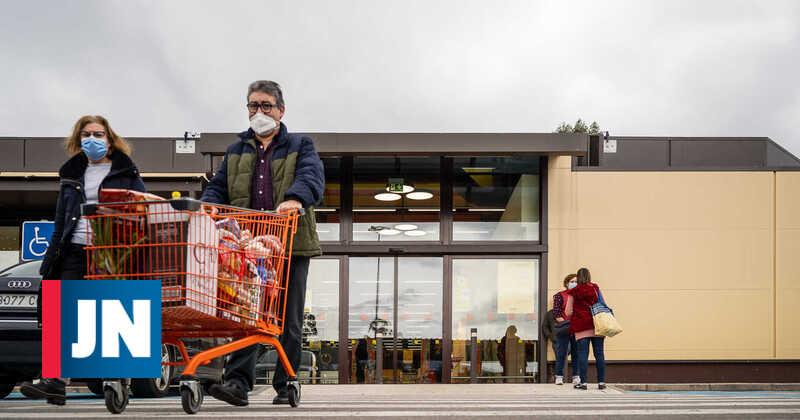Food commodities weigh more than 20% in the consumption basket. Lisbon is hardest hit by energy costs, with the North coming right behind.
Portugal’s inflation rate measured in September this year compared to the same month in 2021 jumped to a maximum of three decades in the range of 9.3%, the National Institute of Statistics (INE) revealed yesterday, confirming its first estimate at the end of the year. September.
But the national average has a different control. On Thursday, the National Institute of Statistics detailed inflation figures for the various impacts of rising cost of living by region, types of consumption, etc. Here, too, records were broken.
The Nordic region, in terms of the cost associated with the final consumption of basic commodities, appears to be the hardest hit in the country by the price hike. In the North, average food prices rose 17.7% in just one year to last September. The national average is 16.4%. The second most expensive area is the Lisbon metropolitan area, with an inflation of 16.6% in food products.
It should be noted that the group classified as “Foods and non-alcoholic beverages” has the largest weight in the standard basket used to calculate the Consumer Price Index (CPI). It is worth about 22% of the considered expenses.
In areas of high poverty and inequality, it is evident that the weight of food consumption tends to absorb more spending by households and final consumers.
Energy has its weight too
Therefore, the higher the inflation rate here, the greater the pressure to push families into increasingly difficult situations in managing their current budgets.
Another component of the CPI with the highest weight is, of course, energy products, which include light, gas, diesel, gasoline, and heating fuels.
Final consumers in Greater Lisbon are the ones feeling the most stressed: In September, annual inflation in this category was 23.9%.
The North appears to have taken a hit, just a few tenths away, with annual inflation of 23.1% and above the national average of about 22.2% in capacity, according to data from the National Institute of Statistics.
There are clear indications that areas with more tourism and people’s traffic may be polluted by sharp price hikes.
The product component, at the national level, driving the inflation measured in September, is, unsurprisingly, that of “restaurants and hotels”: according to the National Institute of Statistics, the annual rise in prices in this sector group is about 18%. It is practically double the national average inflation (9.3% mentioned above).
In short. Portugal is currently recording inflation which has already reached more than 9%. The Lisbon metropolitan area leads this global index with 9.9%. The north of the country faces an overall price hike of 9.4%.
The regions least affected, although there has been significant inflation in the history of the last decades of the euro, are the Azores (6.4%) and Alentejo (7.6%).
With the dispersion present in prices, it is clear that the averages on which state budgets are based can distort or serve some less than others.
Inflation drops to 4% in 2023
The new state budget proposal for 2023 (OE2023), known earlier this week, predicts that national inflation will remain at 7.4% this year and that it will drop significantly in 2023, to 4%.
Impact on the cost of living
The average pensioner from the northern region or Lisbon may already be facing a significant erosion of his purchasing power. Suffice it to see that inflation in these two regions exceeds the national average. The same problem tends to arise in the case of an expected increase in the national minimum wage.

“Wannabe internet buff. Future teen idol. Hardcore zombie guru. Gamer. Avid creator. Entrepreneur. Bacon ninja.”

